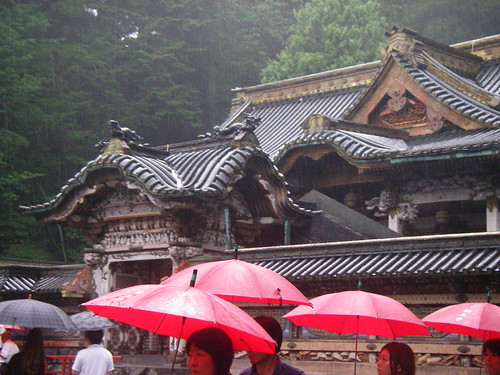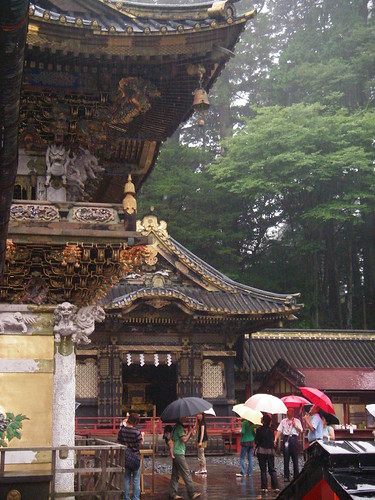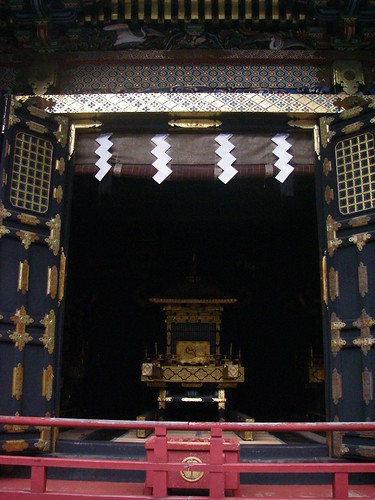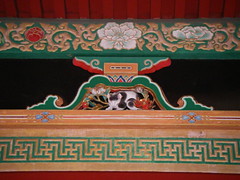Nikko: Rain and Shrine

10/09/2007
I was glad for the umbrella I bought on the way: at first it’d just looked like a brief shower, but by the time the train approached Nikko, heavy clouds had closed in from all sides.
They say that, for three days after a Typhoon, the weather is completely clear. Too bad that today was Day Four post-Fitow.

It may not have been the best day to visit Nikko, but the gaudy umbrellas seen against the backdrop of ancient shrines and mountain forest created its own drama. The gossamer curtain of rain lent it an almost dreamlike atmosphere.

Hushed crowds sought shelter under lavishly decorated roofs. We huddled together until the rain eased, then scurried across the courtyard and stepped dripping into the hall of the Crying Dragon, wet socks gliding over smooth wood. We blinked raindrops from our eyes as we beheld the gilded splendour of the Honden. And so on.
There is a saying: “Don’t say magnificent until you’ve seen Nikko.” But it can also mean: “See Nikko and say ‘enough’.”
And after a while, it was enough. Gates, temples and shrines blended into one in the aerosol mist that followed the rain. Black wood, grey roofs, red lines and golden curlicues danced before my eyes.
Among the splendour of the Toshogu Shrine complex, it’s the details that stick in the mind.

Plain among the grandeur are Nikko’s famous animals, and two of the most famous woodcarvings of all.
 First among them is the original 17th century carving of the Three Wise Monkeys: Kikazaru, covering his ears, who hears no evil; Iwazaru, covering his mouth, who speaks no evil and Mizaru, covering his eyes, who sees no evil.
First among them is the original 17th century carving of the Three Wise Monkeys: Kikazaru, covering his ears, who hears no evil; Iwazaru, covering his mouth, who speaks no evil and Mizaru, covering his eyes, who sees no evil.
This is the first known depiction of what is considered an old Chinese legend. (Personally, I like this depiction better!)
Above Kugurimon Gate, Nemuri-neko,  or the Sleeping Cat, represents Hidari Jingoro, the famous cat-loving left-handed Edo-period architect and artist who created many shrines and temples.
or the Sleeping Cat, represents Hidari Jingoro, the famous cat-loving left-handed Edo-period architect and artist who created many shrines and temples.
The carving guards the final resting place of Tokugawa Ieyasu. In stark contrast to the rest of the complex, once you pass through the gate you enter a long flight of 200 stone steps leading past mossy trees to the surprisingly simple tomb, situated aloof from all the splendour.
Tags: Japan without a Clue, Nikko, Rain, Travel, Tag Index